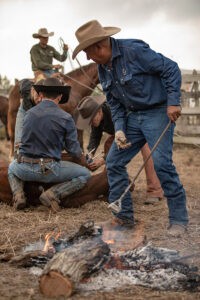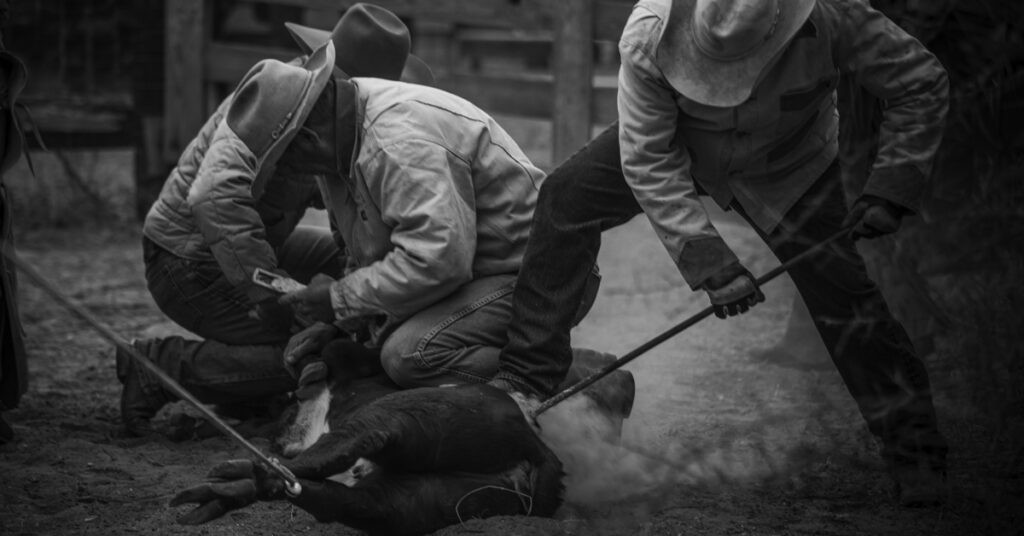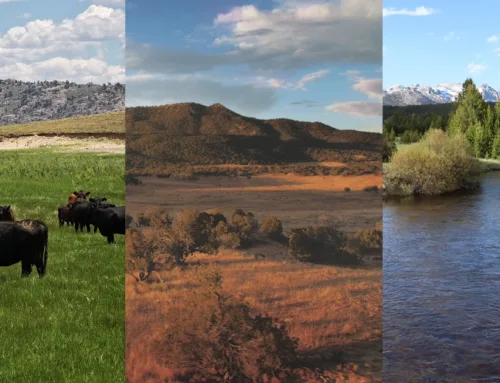East Foundation Earns ARO Status
East Foundation Earns ARO Status
By Lisa Martin

LR_EastFoundation-01
DIAMOND BAR This iconic brand is a vestige of South Texas's Wild Horse Desert.
The East family’s Diamond Bar brand has long set a standard of excellence. Throughout the 20th century, Tom T. East Sr., Alice Gertrudis Kleberg East, and their descendants forged a reputation as pioneering South Texas ranchers.
Since 2012, the East Foundation has embraced and expanded upon the family’s legacy as ranchers and conservationists. A new designation — the first of its kind in the nation — will enable the East Foundation to make an even greater impact through its ranching, science, and educational programs.
In late 2022, East Foundation was designated the nation’s first agriculture research organization (ARO). Established by Congress in 2015 to ease some of the regulations on ag-oriented nonprofits, AROs engage in continuous active research with the goal of benefiting long-term agricultural producers such as farmers and ranchers.
With rangeland diminishing across the Lone Star State, the East Foundation’s 217,000 acres, spread across six ranches in Jim Hogg, Kenedy, Starr, and Willacy Counties, could rightly be considered a living laboratory of conservation. The foundation partners with local universities with the goal of educating future leaders in ranching, wildlife biology, and land management.
Educational Partnerships
Partnerships with Texas A&M, Texas A&M – Kingsville, the King Ranch Institute for Ranch Management, and the Caesar Kleberg Wildlife Research Institute made East Foundation an ideal candidate for the ARO designation. As a research-conducting organization with an overarching educational mission, East Foundation contributes funding along with providing land, equipment, facilities, and staff.
“We already had a track record of success as a research organization,” says James Powell, the East Foundation’s director of communications. Powell adds a lofty goal for the organization: “Our vision is to be the leading voice for the importance of private land stewardship in the US.”
The East Foundation has worked with more than 50 graduate students. Each is enrolled in a master’s level or PhD program under the supervision of a faculty member in the Texas A&M system. The current class of 10 students includes graduates of Princeton, the University of Georgia, and Ohio State.
“They live, work, and breathe their science in the midst of a large, private, operating cattle ranch, and it completely changes their perspective on private land stewardship, what that means, and the role of private lands in conservation and maintaining sustainable agriculture production,” says East Foundation CEO Neal Wilkins. The goal is to provide a firm foundation for these future scientists, ranch managers, and policymakers.
Next Generation of Leaders
Research scientist Andrea Montalvo earned her undergraduate degree at the University of Vermont before pursuing a doctorate in wildlife science through the East Foundation and the Caesar Kleberg Wildlife Research Institute at Texas A&M University – Kingsville.
A year before receiving her PhD, Montalvo was hired by the East Foundation to work out of the Hebbronville office, where she leads some of the foundation’s large-scale monitoring projects, which serve to document the impacts of management on landscape function.
From January to July, Montalvo and her team, which includes several graduate students, monitor a variety of species of small mammal populations. From April through July, Montalvo’s team also tracks the grassland birds that are native to the ranch, which include bobwhite quail, meadowlarks, and certain sparrows.
“I’m available to the graduate students partly because of proximity,” says Montalvo, who also co-chairs the committees of two of the PhD students. “On top of their own research, we want them to grow as leaders. They are young and are trying to figure out how to manage people and navigate conflict.”
Roel Lopez, director for the Texas A&M Natural Resources Institute and a professor in the university’s department of rangeland, wildlife, and fisheries management, describes the work of the East Foundation as “helping to operationalize the land-grant mission of A&M. We are walking hand in hand with them, and the fact they’re an ARO now will only strengthen the relationship,” he says.
Wilkins notes that the ARO designation also “relieves constraints on effective policy engagement. Private foundations are prohibited from direct policy advocacy, but not AROs.”
“Policy advocacy can sometimes have a negative connotation,” says Jason Sawyer, chief science officer for East Foundation. “But we know that many decision-makers may be removed from direct landownership. As an objective voice, we can help to avoid the unintended consequences of well-intended policy action through the advocacy-education-engagement process.”
For his part, Clay Mathis, director of the King Ranch Institute for Ranch Management, appreciates the foundation’s ongoing efforts toward profitable livestock production. “It’s the balance of multiple uses of the land,” he says, adding that the average graduate of his program manages nearly 200,000 acres.
Sophisticated Ranch Operators
“We are purposefully developing them to manage the most complex ranching operations in the world,” says Mathis. The institute’s master of science students spend time on East Foundation lands in service-learning projects about strategic planning, grazing systems, disease management, and more.
Wilkins describes the foundation’s focus on educating the next generation of ag leaders as “a long game,” one that his dedicated board of directors has supported for more than a decade. The efforts are paying off. Today, men and women who have spent time on East Foundation ranches are now in leadership positions in more than 20 states.
East Foundation’s educational efforts don’t start at the graduate level. The foundation’s Behind the Gates program brings some 3,000 South Texas schoolchildren to the El Sauz and San Antonio Viejo Ranches each year.
Most of the young students have never spent time on a working cattle ranch. Thanks to East Foundation’s new status as an ARO, corporations can now sponsor the program.
“They fall in love with the natural landscape of South Texas,” Wilkins says. “For many, it’s the only experience they’ve ever had of where their Whataburger comes from.”
Wilkins believes that East Foundation was perfectly positioned to blaze trails as the nation’s first ARO because partnering with organizations, especially universities, to promote private-land stewardship through its operations and scientific research dwells in the foundation’s DNA. “The ARO designation really means we can do what we do more effectively,” he says.
“We’re not a preserve or a refuge of some kind,” Sawyer adds. “These are working landscapes that will help anyone involved in agriculture make better decisions based on science and land stewardship.”








